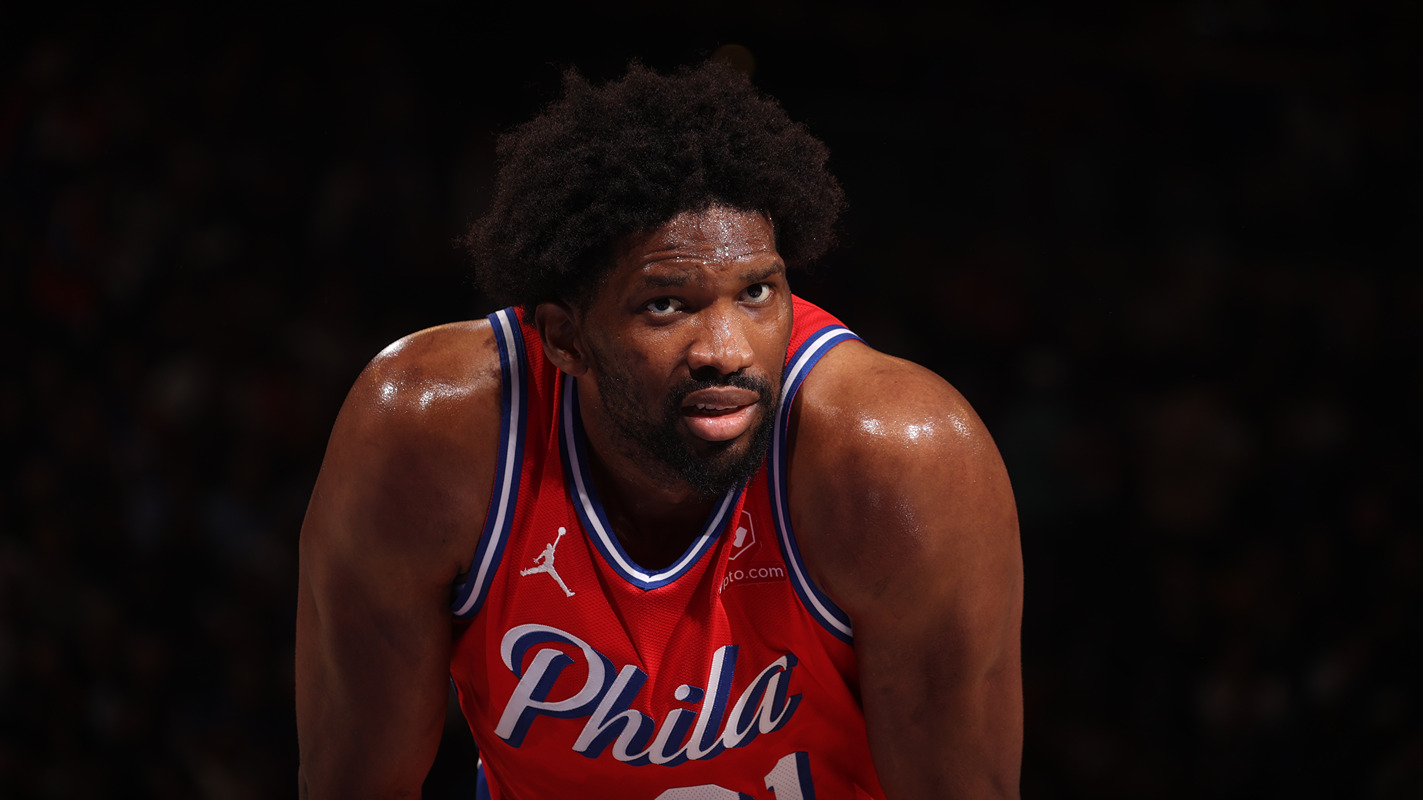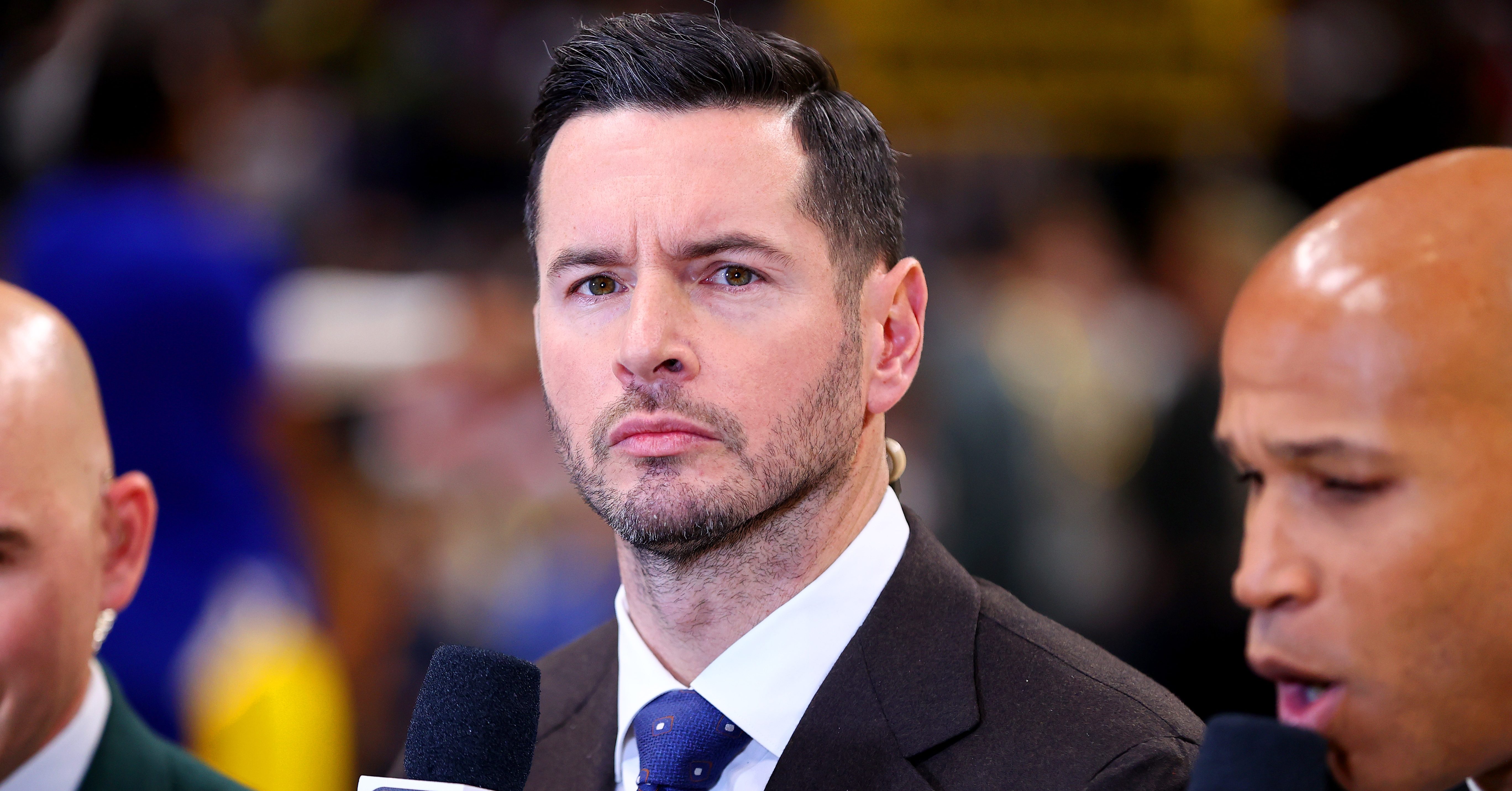With the exception of Friday's letdown vs. the Cavs, just about every single Sixers game these days seems to come down to the final few possessions.
The Sixers have fared well in those close contests - the team is 5-1 in games decided by three points or fewer.
At the end of games, head coach Brett Brown has a few actions he favors that aim to put his best players in the best positions. With Jimmy Butler on board, he's started adding some new looks into the Sixers' late-game offense.
Here's what Brown had to say about the Sixers' crunch time offense after Wednesday's win over the Pelicans:
We put Ben [Simmons] and [JJ Redick] in that small-small pick-and-roll a lot. I actually want to grow JJ and Jimmy [Butler] in that look, Jimmy as a ball-carrier, JJ as the screener. … JJ actually scored on that sort of running left-handed play just out of basic pindown action, Floppy action. I tried to stay more in concepts and movement than static play calls more than normally we do. I feel like you're going to see Jimmy be in that mix as time goes on.
Let's break down how the Sixers' offense operates late in the fourth quarter, as well as how it can evolve moving forward.
Redick as a screener
Philadelphia 76ers
Complete coverage of the Philadelphia 76ers and their rivals in the NBA from NBC Sports Philadelphia.
While Redick is renowned for his shooting, the Sixers love using him a screener, as Brown said. The one action you'll see them use consistently late in the game, often, again and again, starts with Redick setting a middle ball screen for Simmons. If that screen is effective, Simmons can drive straight to the rim.
Typically, though, Redick will flare out behind the three-point line after setting the screen. Since most teams deny Redick the ball, Simmons usually will hit Joel Embiid on the strong side wing. Embiid can then hand it off to Redick, sealing Redick's man and freeing the Sixers' veteran shooter for an open three-pointer. Below is an example of that option, one we showed in our film review from a couple weeks ago.
Instead of handing it off to Redick, Embiid will often keep the ball instead, like on this play below. Because Redick draws so much attention, Embiid tends to have room to attack his man one-on-one.
Redick and Embiid improvised well on this play vs. the Suns; Embiid used another ball screen from Redick to build momentum going to the hoop.
The Sixers added another interesting wrinkle against Phoenix, one of the seemingly infinite possible options of this action. Rather than using a screen from Redick, Simmons handed the ball off to him and screened off Redick's defender. The play then continued as normal, with Redick finding Embiid on the wing and the big man handing it back to Redick.
Keep an eye out for the Sixers starting to "grow Jimmy and JJ" in this action, as Brown said, with Butler in Simmons' place as the ball handler.
Redick running around screens
Redick doesn't just set screens; he receives plenty as well. The attention he attracts off the ball frequently results in open shots for his teammates.
The play below is a good example. DeAndre Ayton recognizes Redick running off a pair of screens away from the ball, so he slides to the middle of the floor. Butler notices Mike Muscala is unguarded and finds him for an open three.
You can see below the "Floppy action" Brown talked about from the win over the Pelicans. In Floppy action, a shooter is stationed under the basket, with the option to run around staggered screens on one side of the floor or a single pindown screen on the other. On this play, Redick decided to use Wilson Chandler's screen, curled around E'Twaun Moore and finished over Anthony Davis.
The Embiid-Redick 2-man game
Another favorite late-game action for the Sixers is the two-man game between Embiid and Redick. Embiid receives the ball at the elbow and Redick curls up from the baseline.
Because defenses know the Sixers love the Embiid-Redick two-man game, the Sixers have a clever counter. The play begins as it normally would, with an entry pass to Embiid at the elbow and Redick stationed in the strong side corner. But instead of Redick curling up, he sets a screen for Embiid. After running the conventional two-man look seconds earlier against the Suns, Phoenix was caught off guard.
The new guy
Butler is already very much "in the mix" for the Sixers late in the fourth quarter, as Brown put it. The Sixers have tried to play to his strengths in his first few games.
Butler's game-winner in overtime against the Hornets last Saturday night was pretty simple - get Butler the ball and space the floor.
It's the same play the Sixers ran at the end of regulation, when Butler missed an open mid-range jumper.
"It doesn't take much creativity to find a way to win," Brown told reporters in Charlotte. "That's what the great players can do and it's what we spoke about with the inclusion of him, whether it's the pick-and-roll, isolation, to create his own looks."
The Sixers are beginning to introduce more isolation looks for Butler. On the play below vs. the Pelicans, Muscala and Wilson Chandler set cross screens to isolate Butler on Jrue Holiday.
Looking ahead, the Butler-Embiid pick-and-roll is a strong option for the Sixers, though one they haven't used much yet. Butler got an open jumper out of that play vs. Phoenix and Embiid tipped in his miss.
A play we showcased in our last film review continues to be a part of the Sixers' late-game package - Butler makes an Iverson cut, then receives staggered ball screens from Simmons and Embiid.
In his six games with the Sixers, Butler has 26 fourth-quarter points and seven assists. He's capable of much more.
Normal offense
Though some of the Sixers' offense late in the game is used exclusively in crunch-time situations, like the isolations for Butler against Charlotte, much of it is what they run throughout the entire game.
The Sixers' "Ear tug world," commonly known as "Horns" throughout basketball, starts with two big men at the elbows and two wings in the corners. On the play below, one of the men at the elbow sets a screen for the point guard, then receives a flare screen from the other big man. Muscala got a decent look here vs. the Jazz.
You'll also notice the Sixers frequently run their normal, "A to B" motion offense late in games, which starts with a simple pass exchanged between the point guard (A) and the center (B). In this example, Simmons dribbles to the elbow extended, while off the ball, Redick comes off a wide pindown screen from Embiid (the Sixers call this a "sprint away" screen). Simmons notices Nikola Mirotic is helping off Chandler and makes a good read to find Chandler for an open three.
Trusting his players to make something good happen usually works for Brown, but not always.
With less than two minutes left vs. Utah, the Sixers wanted to find a way to get Embiid the ball in the post. Redick attempts to free himself for a pass from Simmons but is denied the ball by Ricky Rubio. For some reason, Simmons still tries to give Redick the ball.
The play below is the worst result you can imagine when Brown leaves his players to their own devices. Though Redick is an excellent screener and shooter, he's not the guy Brown wants to handle the ball late in the game. Mikal Bridges picks his pocket here as the Sixers try to ice a win over the Suns.
Those couple plays aside, the Sixers generally have been able to get the ball in the hands of their four top offensive players - Simmons, Butler, Embiid and Redick. With Redick's effectiveness as a screener and a shooter, Simmons' passing ability, Butler's skill in isolation and pick-and-rolls, and Embiid's many talents, the Sixers have the tools to be elite offensively in crunch time.
Click here to download the new MyTeams App by NBC Sports! Receive comprehensive coverage of your teams and stream the Flyers, Sixers and Phillies games easily on your device.






















